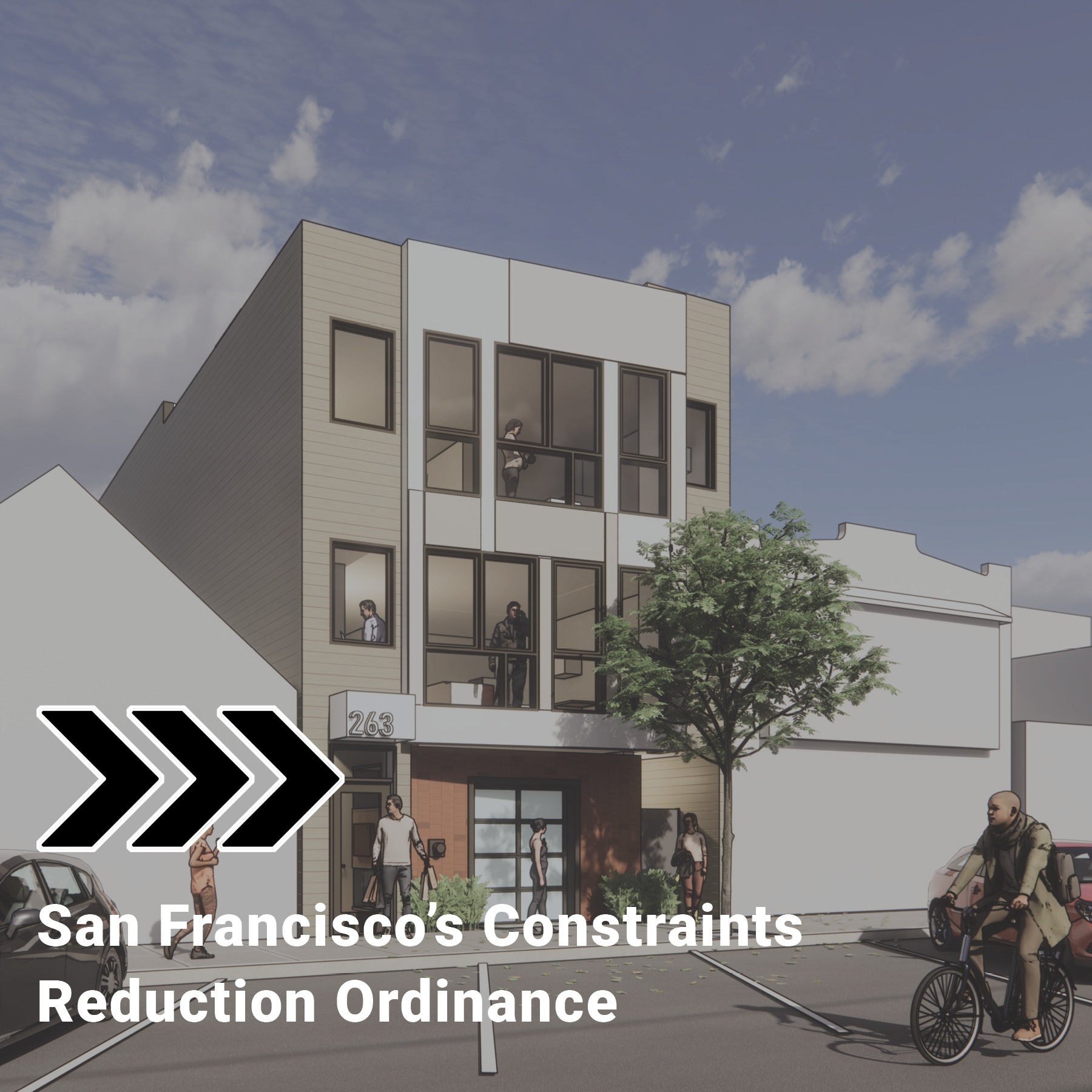THINKING: housing
Unlocking San Francisco’s Housing Potential: Constraints Reduction Ordinance

San Francisco’s Board of Supervisors has green-lighted Mayor London Breed’s Housing Constraints Legislation, marking a pivotal moment in the city’s quest to increase its housing stock. This initiative is a response to the pressing need for more housing in a city where development has been notoriously slow and complex. This legislation is designed to streamline the process of housing development, making it quicker and less cumbersome for new projects to come to fruition.
Overview of the Constraints Reduction Ordinance
At its core, the legislation seeks to simplify the notoriously complex approval process for new housing developments by removing hearings and additional steps for projects that meet the requirements of the Planning Code. This is done to reduce both the cost and the amount of time required to obtain permits for desperately needed new housing.
What does this mean for someone trying to build a project? In short, many projects will no longer need to do neighborhood notification, receive conditional use approvals or obtain variances to be approved when a project sponsor is creating new housing.
Another aspect of the Constraints Reduction Ordinance is its move to remove certain code requirements and geographical restrictions that have historically hindered the construction of new housing in various parts of the city. This opens up more areas for development, potentially leading to a more balanced and widespread approach to housing construction across San Francisco.
The legislation addresses critical areas of San Francisco’s planning and zoning laws to facilitate the development of 82,000 housing units over the next eight years, responding to the city’s state-mandated Regional Housing Needs (RHNA) allocation. The changes include:
- Less Conditional Use Authorizations: This legislation would amend many existing code provisions that require the approval of a Conditional Use Authorization (CU) by the Planning Commission. A CU approval can add six to nine months to the housing approval process by requiring hearings and discretionary approvals for projects that already comply with zoning laws.
- Streamlining and Standardization of the Planning Code: The legislation institutes a Priority Equity Geography Special Use District (SUD), and the code removes many notification requirements for projects outside of this area. The code also standardizes various zoning requirements (like the rear yard setback) to foster more accessible and streamlined housing development processes.
- Incentives for Affordable Housing: Adjustments to eligibility for density bonus projects and development impact fee waivers for housing units affordable to households earning up to 120% Area Median Income (AMI), promoting the construction of affordable housing.
- Improvements to HOME-SF: This is the city’s local density bonus program that offers more flexibility in some areas than the state law.
The urgency of these reforms is underscored by the threat of HCD decertification due to non-compliance, which could trigger the application of the Builder’s Remedy. This would have also resulted in the state withholding critical funding sources. The legislation reflects a critical effort to meet the city’s housing needs, avoid state penalties, and benefit from state incentives for mixed-income multifamily housing developers.
The Broader Implications
The Planning Code changes in this legislation provide faster and more predictable paths for building housing in San Francisco, hopefully moving us closer to building the 82,000 units of new housing mandated by the state. Streamlining legislation for affordable housing has made approval timelines drastically shorter to the point they are now measured in months instead of years. We are hopeful that the Constraints Reduction Legislation is another piece of the puzzle to build our way out of our huge housing deficit in the coming years.